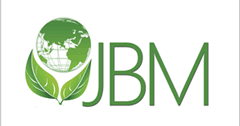Abstract
Antibiotics have been found extensively in the environment, particularly in groundwater, sediments, and surface water. The purpose of this study was to isolate and identify antibiotic-resistant bacteria from wastewater collected from sewage (Sher Shah Colony, Raiwind) and an industrial area (Hudiara Drain Gajju Matta) in Lahore. Ten bacterial strains (Z1, Z2, Z3, Z4, Z5, Z6, Z7, Z8, Z9, and Z10) were isolated from the samples. All of these strains were gram-positive. Antibiotic resistance profiling showed that strain Z1 was most resistant to ampicillin (1500 μg/ml) among all of the antibiotics (tetracycline, penicillin, erythromycin, and chloramphenicol) that were tested. A growth curve study revealed that these strains showed constitutive enzyme activity. Exopolysaccharide (EPS) production of strains Z1 and Z3 was 1.34±0.010 g/L and 1.35±0.011 g/L, respectively, under non stress conditions, while in the presence of ampicillin stress, strain Z1 produced higher EPS (1.61±0.017 g/L) than strain Z3 (0.85±0.012 g/L). Thin layer chromatography (TLC) analysis of the extracted EPS of strain Z1 showed that it contained carbohydrates and amino acids. Fourier transform Infrared (FTIR) study of EPS produced by strain Z1 showed that it is made up of many different functional groups, including alkenes, alkynes, and carboxylic acids. Scanning Electron Microscopy (SEM) revealed that EPS became firmly connected to the cells in the presence of stress. The 16S rRNA gene sequence of strain Z1 (OR177988) showed 100% homology with the Bacillus paramycoides (MCCC1A04098). The findings contribute to the understanding of the microbial ecology of wastewater systems and highlight the need for further research on biofouling, bacterial adaptability, and the potential implications for public health and the environment.
Article History
Received: May 26, 2024; Accepted: Sep 05, 2024; Published: Dec 31, 2024
Recommended Citation
Hassan, Z.,
Jamil, N.,
& Batool, R.
(2024).
Exploring Antibiotic Resistance and Exopolysaccharide Production in Bacillus Paramycoides from Wastewater,
Journal of Bioresource Management, 11
(4).





